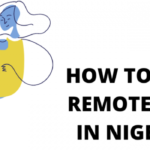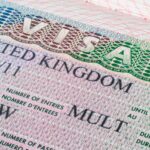The cost of a visa depends on your circumstances and the visa subclass you are applying for. If you’re applying from outside Australia, the cost is different depending on whether your application is made online or by paper. Several different visa types are available if you want to live in Australia.
Find out more about how to pay for an Australian visa and how much to pay, the different types of Australian visas, and the requirements for application.
How Much is an Australian Visa?
Below is the tubular representation of the different Australian visa and their cost.
| Type of Visa | Cost |
| Tourist Visa subclass 600 (minus frequent traveler stream) | 145 AUD |
| Student Visa Subclass 500, 590 | 630 AUD |
| Training Visa – Subclass 407 | 315 AUD |
| Transit Visa subclass 771 | Free |
| Working Holiday subclass 417,462 | 495 AUD |
| Temporary Work Visa subclass 400, 408, 403 | 315 AUD |
| Temporary Graduate Visa Subclass 485 | 1,680 AUD |
| Skilled Recognized Graduate Visa Subclass 476 | 410 AUD |
| Temporary Skilled Shortage Visa Subclass 482 (Short-term stream) | 1,290 AUD |
| Temporary Skilled Shortage Visa Subclass 482 (Medium-term stream) | 2,690 AUD |
| Skilled Work Visa subclass 491, 494, 189, 190 (sponsored, regional, sponsored-regional) | 4,115 AUD |
| Partner Visa Subclass 100. 309, 300. 801, 820 | 7,850 AUD |
| Business Innovation and Investment (significant investor stream) Visa subclass 188 | 8,925 AUD |
| Business Innovation and Investment 188 (premium investor stream) Visa subclass | 9,455 AUD |
| Business Innovation and Investment 188 (entrepreneur stream) Visa subclass | 4,115 AUD |
Australian Visa Installment Payment?
When applying for an Australian visa, you must make payments in two installments.
These installment payments are made at different stages during the visa application. Let’s look at the two installments and what they consist of.
First Australian Visa Installment Fee
This first installment fee consists of four different fees, and they include:
- The base application fee
- Non-internet charge (for specific cases)
- Additional applicant fee
- Subsequent temporary application fee (for some particular type of visa)
Second Australian Installment Fee
Upon the approval of the visa, you will be required to pay some additional fee to collect the visa; however, this depends on the visa type you applied for. Also, you will not be required to pay the fee upon rejecting your visa application. Do not be in a hurry to pay when your visa gets approved. The Australian authority will notify you when to make the payment.
Types of Australian Visa
Several visa options are available to people who want to study, work and live in Australia. The best way to find out which type of visa is right for you is to visit the Australian Department of Home Affairs website or talk with an immigration agent.
1. Tourist Visa (subclass 600)
This is the most popular type of temporary visa. You can use it to visit family, friends, or business associates in Australia for up to three months. If you plan on staying longer than three months, you’ll need to apply for another type of visa before your tourist visa expires.
2. Electronic Travel Authority (ETA)
An ETA is an electronic travel authority that allows eligible passport holders from certain countries who don’t need a visitor visa to enter Australia as tourists for up to three months without having to complete any paperwork beforehand at an Australian mission overseas (except for some special cases). The ETA can be obtained online or through an airline or travel agent.
3. Temporary Visitor Visa
If you’re coming to Australia temporarily, this visa is for you. It permits you to stay in Australia for three months (or six months if entering as part of an organized tour group). You can also extend your stay by applying for another visitor visa before your current one expires.
4. Work and Holiday Visa
This type of visa allows people from certain countries to come to Australia for up to 12 months to work and travel. It is designed primarily for young people looking for an affordable working holiday before returning home (although some people use it as a stepping stone into permanent residence). The Work and Holiday Visa permits you to work for any employer of your choice during this period. However, there are some restrictions on what kind of employment you can undertake if you want to return later on another Working Holiday Visa or another type of visa.
5. Business Visas
This visa allows you to visit Australia to conduct business-related activities such as selling goods or services abroad, negotiating contracts, and attending meetings. If you have a business visa, you can stay in Australia for up to 12 months, which can also be extended for another six months (a total of 18 months). The business visa comes in different subclasses, each with a different price tag.
6. Skilled Nominated Visa (subclass 190)
If you already have an employer nominated you for permanent residence in Australia, you may be eligible for this visa category. You must demonstrate that the Australian labor market or economy needs your skills before being granted permanent resident status under this category. You must have at least three years of full-time work experience within the past five years before applying.
7. Employer Nomination Scheme visa (subclass 186)
This visa allows employers to nominate a skilled worker for permanent residence in Australia. To be eligible, you must have secured an employment contract with a company registered in Australia or be nominated by an employer already registered in Australia as part of their sponsorship obligations. The job must meet occupational criteria set out by the Migration Regulations 1994 (Cth).
8. Skilled Independent Visa (subclass 189)
This visa allows skilled people not sponsored by an employer to live permanently and work in Australia. If you apply from outside Australia, you must have at least one year of relevant experience within the past five or three years.
9. Business Innovation and Investment Visa (subclass 188)
This allows investors to live permanently in Australia if they invest significantly in an Australian business that creates jobs for Australians.
10. The Subclass 186 Skilled Regional (Provisional) Visa
This visa is open to applicants who have been offered a job in regional Australia and meet certain criteria, including having at least three years of relevant work experience and having completed at least one year of post-secondary education.
11. Skilled Migrant Visa (subclass 189)
This visa allows skilled workers with an offer of employment in Australia to live permanently in the country;
12. Partner Visa (subclass 820)
This visa allows partners who are married or in a de facto relationship with a permanent resident or an Australian citizen to migrate to Australia.
What are the Requirements to Apply for an Australian Visa
The Australian Government has strict requirements for all visa applications, including health checks, police clearances, and character references. You will need to meet these conditions before your application can be considered. You can apply for a visa to live and work in Australia if you’re 18 or older.
To apply for an Australian visa, you’ll need the following:
- Passport — A current passport with at least six months of validity left. Make sure it has enough blank pages for visas!
- Visa Application Form — Completed and signed visa application form
- Evidence of travel insurance — Cover Australia, New Zealand, or Fiji for the duration of your stay, including medical expenses and repatriation costs if necessary (more on below).
- Evidence of funds — You have access to adequate funds to cover all living expenses for yourself and any dependents during your stay in Australia (more below).
- Letter of employment or scholarship: If you are going to Australia on a visitor or tourist visa, you will need to get a letter from your employer or sponsor stating that they will not employ/sponsor you once you arrive in Australia. If you are going on a student visa, you need a letter from your university/college stating that they would provide financial support to you during your stay in Australia.
- Undertaking form: This is where you give an undertaking that you will not seek employment upon arrival in Australia unless sponsored by an Australian employer or sponsor (applicable only if you are going on a visitor or tourist visa).
- Attestation of good behavior: You must provide a character reference and evidence of whether you have been a criminal or not.
How long does it take to get an Australian visa?
It depends on which visa you are applying for and how quickly you submit all the required information from you and other sources, such as police checks, medical examinations, and character references (if required). It is impossible to give an accurate time estimate. However, it shouldn’t take too long.
Can I extend my stay in Australia after arriving as a tourist?
Yes, but only if you have entered Australia legally (not illegally). To extend your stay in Australia as a tourist, please refer to our Extensions section: http://www.immi.
Can I come to Australia with my spouse/fiancee if I have a visitor visa?
Visitor visas are generally only granted if you temporarily travel to Australia for business or pleasure and do not intend to work while here. Suppose you wish to visit Australia with your spouse and stay together while they obtain their permanent residence onshore. In that case, you will need to apply for a Partner Visa before entering Australia. Please note that these applications take time (at least six months), so it is essential to make this application before entering Australia on any other type of visa (such as a tourist).
Can I work while on a tourist visa?
No, you cannot work while on a tourist visa, and it is illegal to do so. However, if you are studying at a university or college, your course provider may sponsor your visa so that you can do paid work while studying there.
When should I apply for my Australian Visa?
The best time to apply for your Australian visa is six months before your course start date or when you receive an unconditional offer letter from the university. However, it is essential to note that if you apply too early, your application may be refused due to insufficient information on file with us. Therefore, we recommend applying three months before your course start date.
Conclusion
Austrian visa comes in different types and subclasses. It is advised you meet an immigration officer or an accredited agency to advise you on the visa type that best suits your purpose of visit.
Also, ensure you start your visa application early, at least three months before your proposed date of travel, to enable you to get all the required documents and meet the criteria.










1 thought on “How Much is an Australian Visa Fee in Nigeria 2023?”